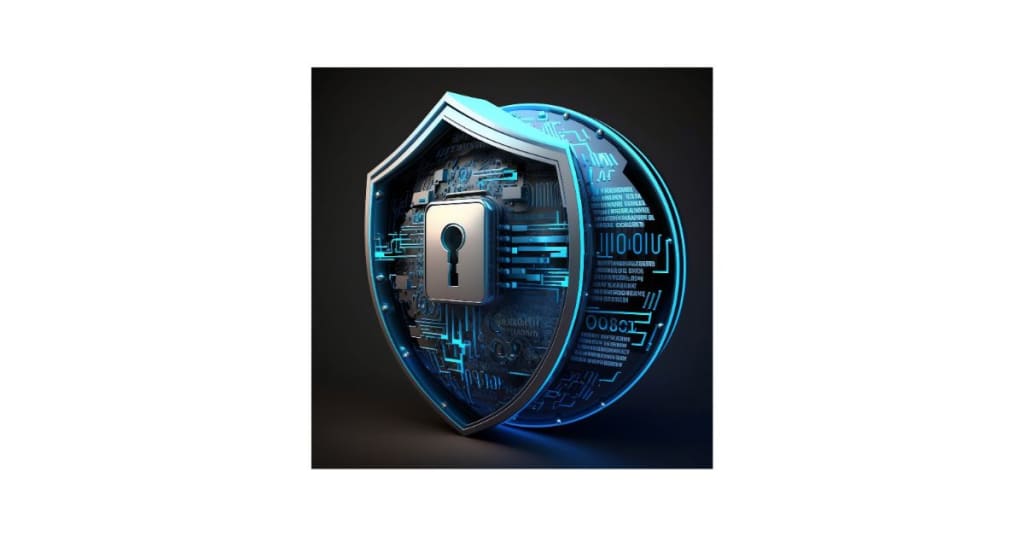
Cyber security is an essential issue for businesses of all sizes today. Organizations must be prepared with effective and comprehensive security strategies as cyber threats evolve and become more sophisticated. One key component of any successful security strategy is GRC, or Governance, Risk Management, and Compliance. In this blog post, we'll explore the importance of GRC for cyber security management.
What is GRC?
Governance, Risk, and Compliance (GRC) is a structured way to align IT with business goals while managing risks and meeting all industry and government regulations. GRC includes the people, processes, and technology necessary to ensure that an organization complies with laws and regulations while minimizing the risks associated with non-compliance.
In the context of cyber security, GRC encompasses the processes and tools used to identify, manage, and mitigate risks related to information security. Cyber security GRC programs aim to ensure that an organization's cyber security policies and procedures align with its business objectives, industry best practices, and regulatory requirements.
By integrating GRC into their cyber security strategies, organizations can ensure that their security posture remains robust and up-to-date, allowing them to respond effectively to emerging threats. Additionally, GRC can help create a security culture within an organization, promoting awareness and accountability among all employees.
In summary, GRC is a critical framework for managing regulatory compliance and risk in cyber security, allowing organizations to identify, manage, and mitigate cyber threats in a structured and comprehensive way.
The crucial role of GRC in cybersecurity
Governance, Risk, and Compliance (GRC) are crucial in cybersecurity management. GRC refers to organizations' policies, processes, and technology to manage their overall business operations. The importance of GRC in cybersecurity ensures that an organization is equipped to address security risks effectively and efficiently.
Cyber threats are becoming increasingly sophisticated and frequent in today's fast-paced digital environment. Companies must manage these threats and minimize the risk of data breaches, financial loss, and reputational damage. GRC frameworks enable organizations to achieve this goal by providing a structured approach to cybersecurity management.
GRC frameworks facilitate the implementation of cybersecurity best practices such as threat monitoring, vulnerability assessments, incident response planning, and risk assessment. By following a GRC approach, organizations can ensure that all cybersecurity processes are integrated and optimized to manage risks efficiently. Additionally, GRC frameworks can help organizations comply with legal and regulatory requirements that relate to cybersecurity.
GRC frameworks are crucial to an organization's cybersecurity posture as they provide a structured approach to managing risk, reducing vulnerabilities, and responding to incidents. An effective GRC program can help organizations protect their assets, maintain the trust of stakeholders, and ensure compliance with legal and regulatory requirements.
How can GRC help with cyber security?
GRC, which stands for Governance, Risk, and Compliance, is a framework organization can use to manage risks and ensure compliance with regulations and internal policies. GRC plays a critical role in cyber security in identifying and addressing potential threats and vulnerabilities.
By implementing GRC, organizations can establish policies and procedures for handling security incidents and data breaches. This helps ensure that employees and stakeholders know their responsibilities in protecting sensitive information and mitigating cyber threats. Additionally, GRC provides a framework for evaluating and mitigating risks associated with new technology deployments or changes to business processes.
GRC can also help organizations stay up-to-date with changing regulatory requirements. For example, with the increasing prevalence of data privacy regulations like GDPR and CCPA, GRC can help organizations comply with these laws and protect customer data appropriately.
Overall, GRC can provide organizations with a more holistic approach to managing cyber security risks, helping them stay proactive rather than reactive. By using GRC frameworks to identify and mitigate risks, organizations can significantly reduce the likelihood of data breaches and other cyber incidents.
Next, we'll discuss some best practices for implementing GRC in your organization. Following some best practices is essential to implement GRC in your organization effectively. One critical best approach is establishing a cross-functional team responsible for GRC, including IT, legal, and compliance representatives. This team should work together to develop a comprehensive GRC plan that aligns with the organization's overall security strategy.
Another best practice is regularly assessing and updating the GRC plan to ensure it remains relevant and practical. This includes evaluating the effectiveness of policies and procedures, identifying emerging risks, and ensuring compliance with changing regulations.
To integrate GRC into an organization's overall security strategy, it's essential to consider how it can complement existing security measures, such as firewalls, antivirus software, and employee training programs. For example, GRC can help identify potential vulnerabilities that traditional security measures may not address.
What are some best practices for implementing GRC?
Implementing GRC requires a well-thought-out plan covering all cybersecurity management aspects. Below are some best practices to consider when implementing GRC:
1. Establish a Governance Framework: GRC establishes a governance framework that clearly defines roles, responsibilities, and decision-making processes.
2. Perform Regular Risk Assessments: Regular risk assessments are crucial to understanding and managing potential cyber threats. Conducting these assessments can help identify gaps in your security posture and inform your strategy moving forward.
3. Establish Strong Controls: Once risks are identified, strong controls must be put in place to mitigate those risks. Implementing security controls is an essential part of a successful GRC program.
4. Continuously Monitor and Evaluate: Monitoring and evaluating the effectiveness of controls is an ongoing process. Continuous monitoring helps to ensure that security measures remain effective and in compliance with industry regulations.
5. Prioritize Compliance: GRC is also about compliance with legal and regulatory requirements. It's essential to keep up-to-date with industry standards, regulations, and compliance requirements.
6. Educate Your Workforce: Human error is a common cause of cyber incidents. Investing in workforce education and awareness programs is a proactive way to prevent cyber-attacks caused by employee mistakes.
7. Engage Senior Management: Senior management must endorse and support GRC programs. When leadership recognizes the importance of cyber security, it's easier to get everyone on board.
Successful GRC implementation requires a holistic approach covering all cybersecurity management aspects. Establishing a governance framework, performing regular risk assessments, implementing strong controls, continuously monitoring and evaluating, prioritizing compliance, educating the workforce, and engaging senior management are some best practices to consider when implementing GRC. By taking these steps, organizations can significantly improve their security posture and protect against cyber threats.
How can GRC be integrated into an organization's overall security strategy?
When integrating GRC into an organization's overall security strategy, it is essential to understand that GRC is not a one-size-fits-all approach. Instead, it requires a customized plan tailored to the organization's unique needs, goals, and risks.
The first step is to assess the organization's current security posture and identify any gaps or areas of improvement. This can be done through a thorough risk assessment, considering the organization's business objectives, assets, threats, and vulnerabilities. Based on this assessment, the organization can develop a set of security controls that address its specific risks and compliance requirements.
Next, the organization can incorporate GRC into its overall security program by aligning it with its security policies, procedures, and practices. This means establishing clear roles and responsibilities for GRC activities, ensuring that GRC requirements are included in security training and awareness programs, and regularly monitoring and reporting GRC activities.
It is also essential to integrate GRC into the organization's technology infrastructure. This can include implementing tools and solutions that automate GRC activities such as risk assessments, compliance monitoring, and audit tracking. By automating these tasks, the organization can free up resources to focus on higher-value security activities such as threat intelligence and incident response.
Finally, GRC should be treated as an ongoing process rather than a one-time event. The organization should regularly review and update its GRC strategy to align with its changing business objectives and risk landscape. This can involve periodic risk assessments, reviewing compliance requirements, and revising security policies and procedures.
Conclusion
In today's ever-evolving cybersecurity landscape, organizations must have a comprehensive approach to risk management. GRC provides a structured framework for managing risks, compliance, and governance. It helps organizations prioritize and allocate resources, maintain compliance with regulatory requirements, and better understand their security posture. By integrating GRC into their overall security strategy, organizations can streamline their processes, enhance visibility, and improve their ability to mitigate risks effectively. Ultimately, by adopting best practices for GRC, organizations can proactively protect their assets, reputation, and customers' data from cyber threats.
About the Creator
Gurugets
Technology refers to the application of scientific knowledge for practical purposes, such as in the design, development, and use of machines, equipment, and systems.






Comments
There are no comments for this story
Be the first to respond and start the conversation.